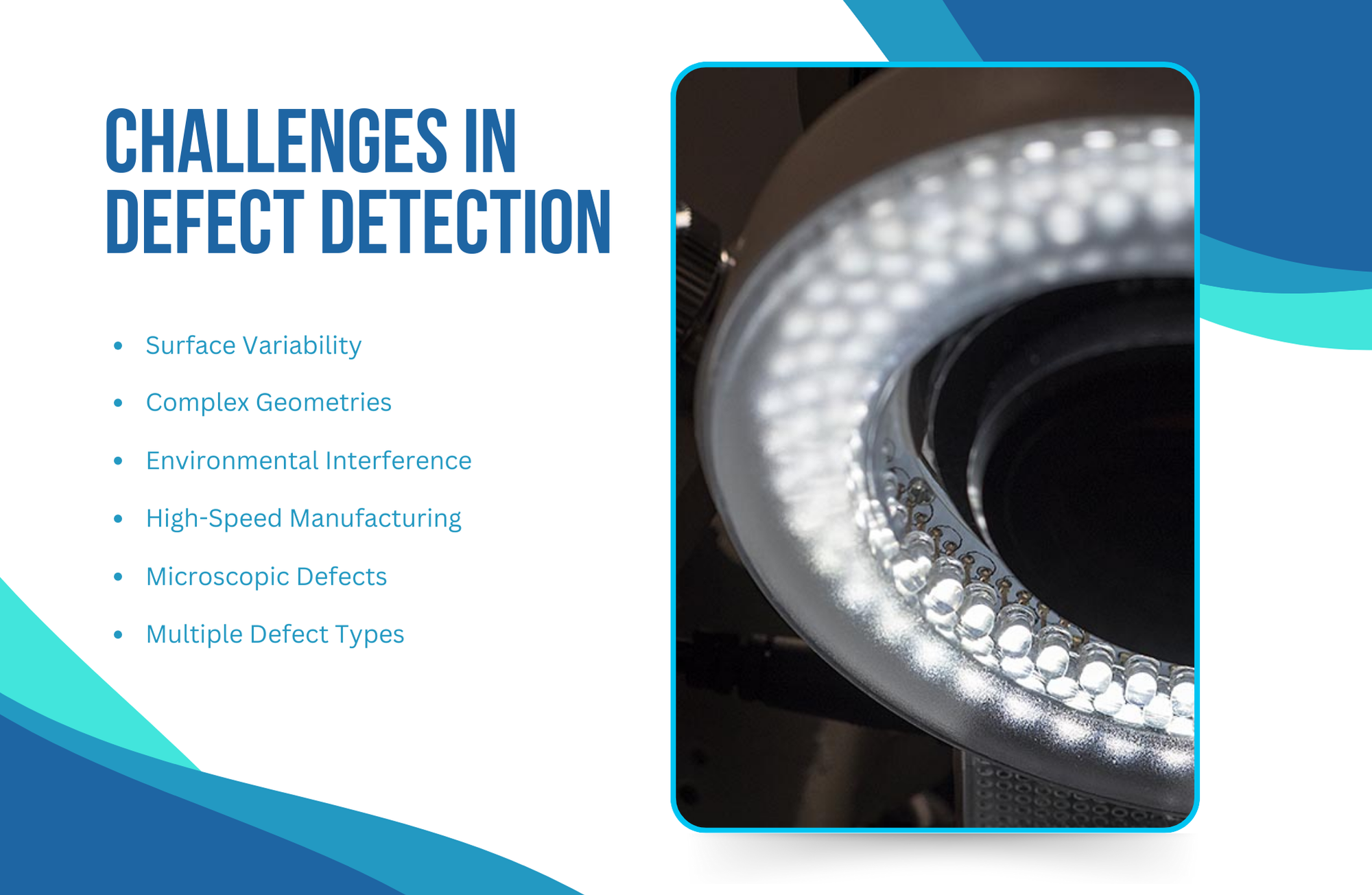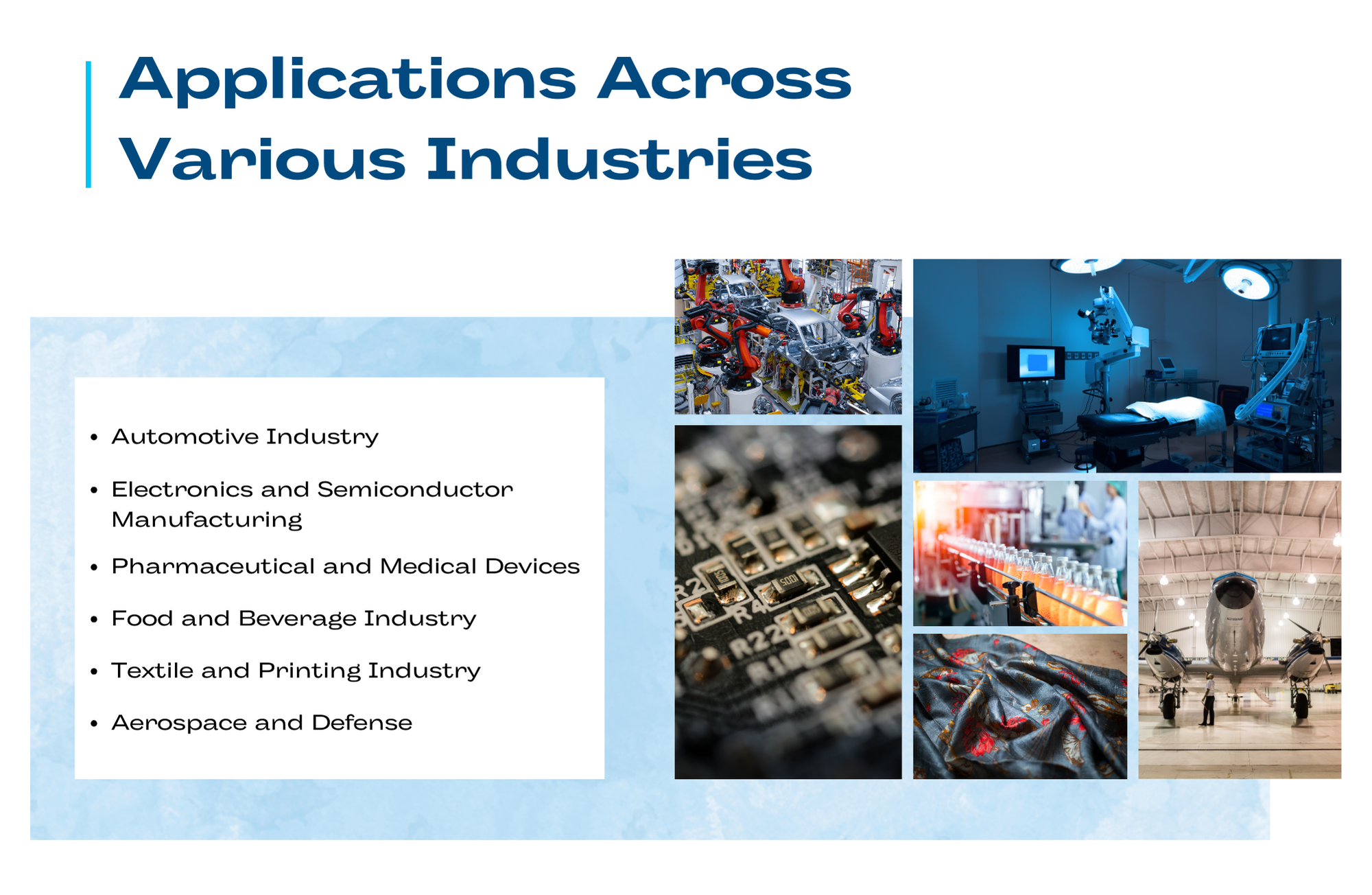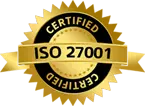Why High Intensity Lighting is essential for Machine Vision Defect Detection
Published on: Feb 07, 2025

Written by: Content team, Intelgic
Why High Intensity Lighting is essential for Machine Vision Defect Detection
Within the domain of industrial automation and quality control, machine vision systems serve as a cornerstone for ensuring precision, efficiency, and operational reliability. These sophisticated systems heavily depend on high-intensity lighting to meticulously illuminate target objects, thereby facilitating the accurate identification and classification of defects. Inadequate illumination can significantly compromise the performance of even the most advanced vision algorithms and high-resolution cameras, leading to inconsistencies in quality assessment and operational inefficiencies.
This article delves into the pivotal role of high intensity lighting in machine vision applications, the complexities and challenges inherent in defect detection, the diverse range of high-intensity lighting solutions available, their applicability across multiple industries, and the distinctive innovations introduced by Intelgic in this field.

Challenges in Defect Detection
Despite advancements in imaging and computing technologies, defect detection remains a challenging task due to several factors:
- Surface Variability: Different materials reflect and absorb light differently, making it difficult to achieve uniform illumination.
- Complex Geometries: Irregularly shaped objects create unpredictable shadowing effects that can hinder defect identification.
- Environmental Interference: Variations in ambient light, temperature, and dust can degrade image quality.
- High-Speed Manufacturing: Many industrial processes operate at extremely high speeds, necessitating ultra-fast image acquisition with sufficient lighting.
- Microscopic Defects: Tiny imperfections require extremely high-resolution imaging, which demands specialized lighting solutions.
- Multiple Defect Types: A single product may exhibit various defects (e.g., surface scratches, cracks, and contamination), requiring different lighting techniques to highlight each issue effectively.

The Role of High Intensity Lighting in Machine Vision and Defect Detection
Machine vision systems rely on lighting to create contrast, enhance image clarity, and reveal surface anomalies that may otherwise go unnoticed under normal lighting conditions. High-intensity lighting ensures that defects such as scratches, cracks, discoloration, and contamination are clearly visible, enabling automated inspection systems to make precise assessments.
The importance of high-intensity lighting in machine vision can be summarized as follows:
- Enhanced Contrast: Proper lighting increases the contrast between defects and the background, allowing for more accurate detection and classification.
- Minimized Shadows and Reflections: High-intensity illumination helps in reducing unwanted shadows and reflections, which can obscure critical defect information.
- Consistency and Repeatability: Uniform lighting ensures consistent inspection results across multiple production batches.
- Increased Inspection Speed: Bright and well-distributed lighting enables high-speed cameras to capture detailed images rapidly, thereby improving the overall efficiency of the inspection process.
Types of High Intensity Lighting
To address the challenges mentioned above, different high-intensity lighting techniques are employed in machine vision applications:
- LED Illuminators:
- Provide stable, long-lasting, and energy-efficient illumination.
- Available in various configurations such as ring lights, bar lights, and backlights.
- Strobe Lighting:
- Used in high-speed inspection applications to capture sharp images of fast-moving objects.
- Helps in reducing motion blur.
- Diffuse Dome Lighting:
- Distributes light evenly, minimizing reflections and shadows.
- Ideal for inspecting shiny or curved surfaces.
- Coaxial Lighting:
- Directs light parallel to the camera lens, illuminating recessed features and detecting scratches or etchings on flat surfaces.
- Structured Lighting:
- Projects patterns (e.g., grids or lines) onto an object to highlight surface irregularities.
- Commonly used in 3D inspection applications.
- Infrared (IR) and Ultraviolet (UV) Lighting:
- IR lighting penetrates opaque materials, enabling defect detection beneath surfaces.
- UV lighting helps in identifying fluorescence-based defects, contamination, or security markings.
Applications Across Various Industries
High-intensity lighting is indispensable in numerous industries where precision defect detection is critical:
- Automotive Industry:
- Inspecting paint quality, surface defects, and structural integrity of components.
- Detecting weld seam imperfections in metal assemblies.
- Electronics and Semiconductor Manufacturing:
- Identifying soldering defects, microcracks in PCBs, and misplaced components.
- Inspecting silicon wafers for imperfections.
- Pharmaceutical and Medical Devices:
- Ensuring proper labeling and packaging integrity.
- Detecting contamination in tablets, vials, and syringes.
- Food and Beverage Industry:
- Identifying foreign contaminants in food products.
- Ensuring consistent packaging quality and seal integrity.
- Textile and Printing Industry:
- Detecting weaving defects, color variations, and print misalignment.
- Aerospace and Defense:
- Inspecting turbine blades, composite materials, and high-precision components for defects.

How Intelgic Stands Out
Intelgic has established itself as a pioneer in the field of machine vision, integrating cutting-edge high-intensity lighting solutions into its advanced automated inspection systems. The company’s approach is defined by:
- AI-Driven Optimization: Utilizing intelligent algorithms, Intelgic dynamically adjusts lighting conditions in real-time, ensuring optimal illumination for precise and efficient inspections.
- Tailored Lighting Solutions: Intelgic crafts industry-specific lighting configurations, addressing unique challenges with precision-engineered designs.
- Effortless Integration: Their lighting systems seamlessly merge with high-speed cameras and AI-powered defect detection technologies, delivering unmatched accuracy and reliability.
- Multi-Spectral Imaging Expertise: By leveraging visible, infrared, and ultraviolet lighting, Intelgic enhances defect visibility across diverse materials, ensuring comprehensive inspection capabilities.
- Robust and Durable Design: Built to endure harsh industrial environments, Intelgic’s solutions guarantee long-lasting performance and operational stability.
- Scalable Solutions: From small-scale operations to large manufacturing facilities, Intelgic’s systems are designed to adapt and grow alongside production demands, ensuring future-ready scalability.
High-intensity lighting is an indispensable component of machine vision and defect detection applications across various industries. Effective illumination enhances contrast, minimizes shadows, and enables precise defect identification, ensuring superior product quality and operational efficiency. However, challenges such as surface variability, environmental factors, and high-speed manufacturing necessitate specialized lighting solutions.
Intelgic stands at the forefront of this technological domain, offering AI-driven, high-intensity lighting solutions that optimize defect detection performance. With its advanced capabilities and commitment to innovation, Intelgic is redefining the standards of automated inspection, empowering industries to achieve unparalleled levels of quality assurance.

